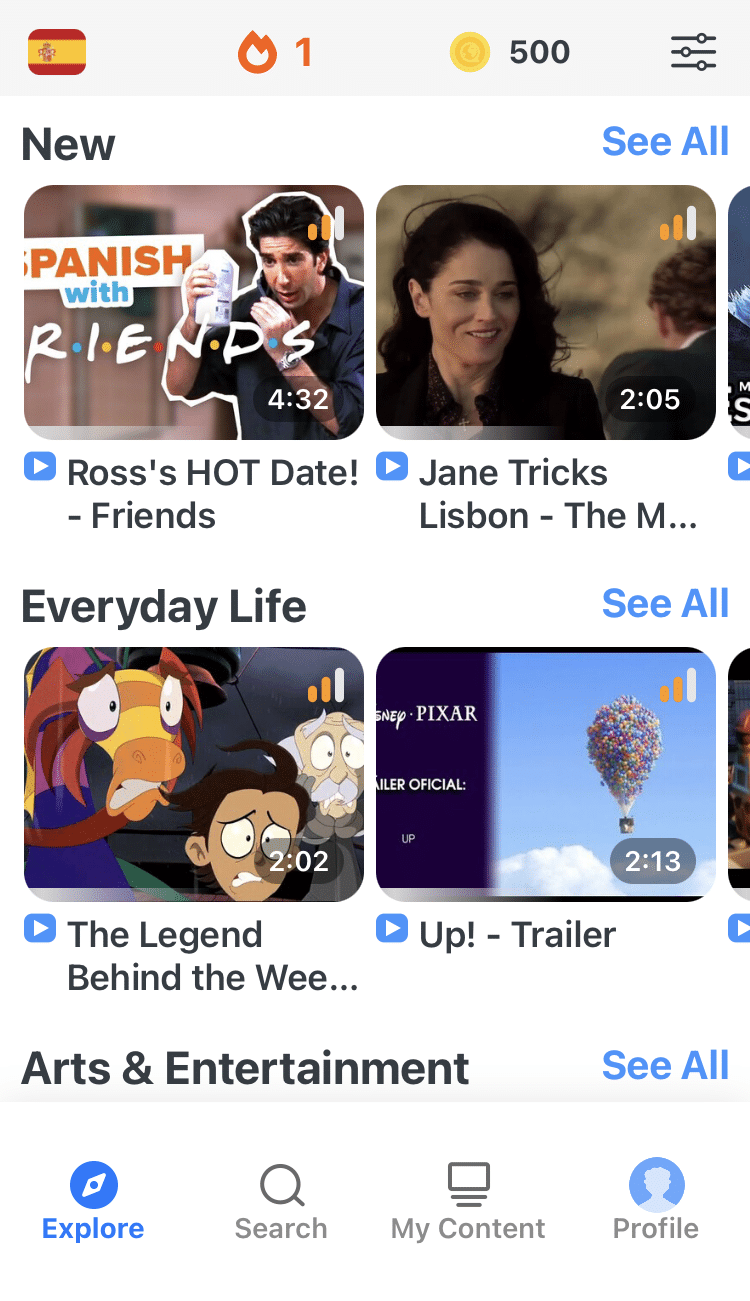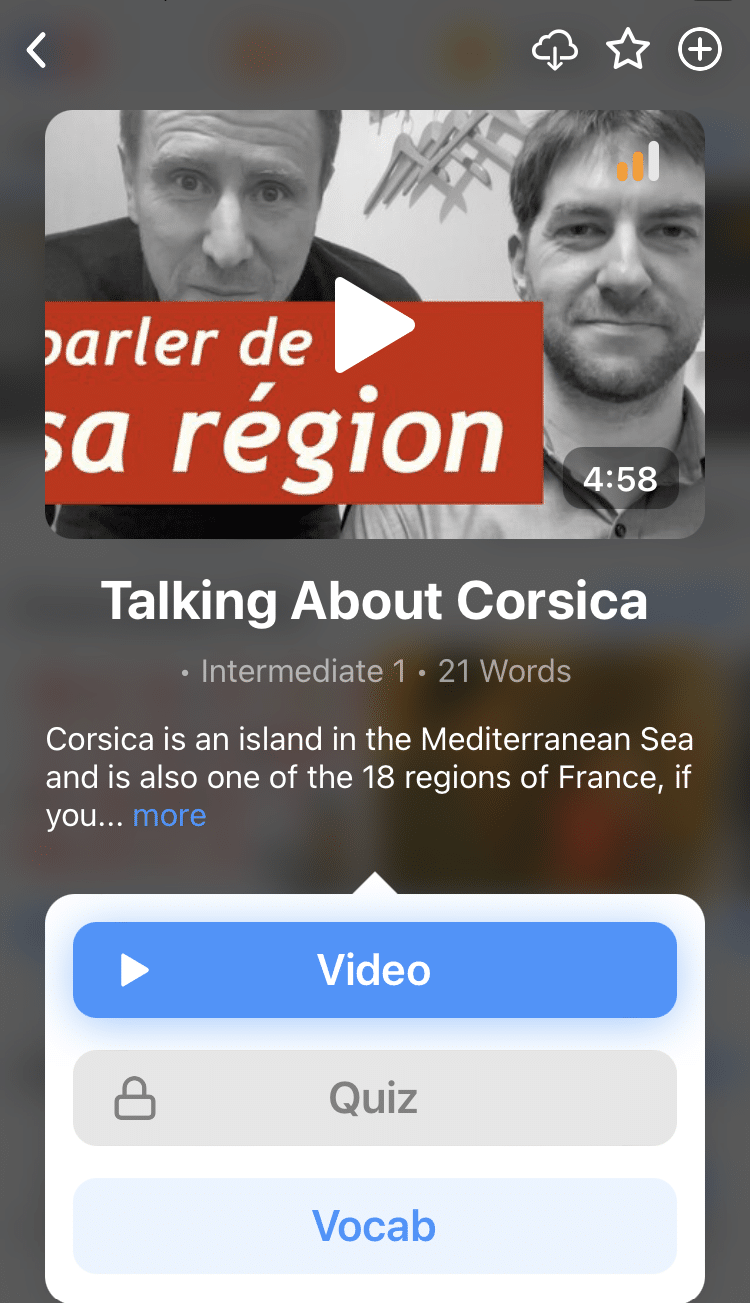
6 Tips on How to Speak Multiple Foreign Languages (Without Getting Confused)
Want to turn your life into a linguistic juggling act?
One second language might be a small time commitment, but as you add a third, fourth and more, the game will change.
Building a few simple habits can ensure that you enjoy all the benefits of a life full of languages down the road.
In this post, I’m sharing my go-to tips that helped me learn to speak different languages without mixing them up.
Contents
- Best Ways to Speak Different Languages
- 1. Only learn two very different languages at the same time
- 2. Think in another language without translating
- 3. Use each of your languages to accomplish a task every day
- 4. Try to develop a special relationship with each of your languages
- 5. Practice code-switching between languages
- 6. Make speaking different languages a part of your lifestyle
- How Your Brain Handles Different Languages
- The Struggles of Speaking Different Languages
- And One More Thing...
Download: This blog post is available as a convenient and portable PDF that you can take anywhere. Click here to get a copy. (Download)
Best Ways to Speak Different Languages
It seems like there are as many ways to learn a language as there are learners out there, and different approaches work better for different learners. But, if you want to keep different languages neatly arranged inside your head, there are a couple of specific approaches you should stick to.
1. Only learn two very different languages at the same time
Learning two closely related or otherwise similar languages at the same time is generally a no-no for language learners, especially those who want to minimize their polyglot problems down the road.
This is because language learning is largely a game of finding patterns of difference. Languages that share a lot of the same or similar words and word parts are different systems with the exact same kinds of rules (rules about word order, how to form a question, how verbs are conjugated) and very similar parts, so figuring out which parts belong to which set of rules is a challenge even for something as efficient at language learning as the human brain.
That’s not to say you can’t learn more than one language at a time—some studies suggest the more the merrier—but it means you should be careful in your choice. Japanese and Russian might be okay, but Spanish and Italian maybe not so much.
2. Think in another language without translating
You always hear it: don’t translate. Instead, try to think in the language you’re speaking. But what does that actually mean, and how do you do it?
On the surface, this means don’t just think “the blue house” when you read or hear la casa azul. But this also means something deeper: la casa azul shouldn’t only not be translated in your mind as you hear it, but in fact it shouldn’t have anything at all to do with the English concept of a “house” or the color called “blue.”
La casa azul should be a construction with walls and a roof and windows, where people live inside and cook and watch football, with blue walls that are blue from paint, not a cartoonish color on your computer’s Paint program. Try as hard as you can to tie the meanings of words in a foreign language to real things in the real world.
You should strive to do all your thinking about meanings in a language in that language, to keep it from ever being tied to or dependent upon your understanding of English words. Prepositions, verbs and even nouns cover different properties in different languages, and looking at any one from the perspective of another makes it look sideways and upside-down.
One way you can think of languages is like muscles that need to be trained. If you only teach them one repetitive back-and-forth motion, like ordering food or asking directions, they might tone up but they’ll never grow very much. And no matter how big you get them, enough time in disuse will shrink them back down to their original size.
The solution here isn’t new or innovative, but tried and true: use it or lose it!
3. Use each of your languages to accomplish a task every day
This doesn’t mean that you need to have a half-hour Skype session every day to keep on top of your languages. What it does mean is that you should use each language to accomplish a task of some kind daily or as close to it as possible.
Accomplishing something can be paying bills or filing residency paperwork in your home abroad, or it can be as simple as using the language to entertain yourself with a couple of funny YouTube videos.
Reading the news, catching up with a friend or researching something in a target language instead of your mother tongue can all be easy ways of incorporating your languages into each day.
You can also turn to language learning apps. Apps can provide convenience and learner-friendly functions to consistently keep you on your lingual toes, even if it’s just a few minutes of study per day.
Plus, many apps offer lessons in multiple languages at once.
FluentU takes authentic videos—like music videos, movie trailers, news and inspiring talks—and turns them into personalized language learning lessons.
You can try FluentU for free for 2 weeks. Check out the website or download the iOS app or Android app.
P.S. Click here to take advantage of our current sale! (Expires at the end of this month.)
4. Try to develop a special relationship with each of your languages
As you become more and more fluent in a language, think about what you use that language for the most or what it naturally lends itself to. It’s easy enough to tie each language to something culturally related to it—maybe you look up recipes in French since you love French cuisine, or maybe you took a semester abroad studying finance in Hong Kong and now your Cantonese is good enough to do all your budgeting and banking in that language.
When I lived in the Netherlands, I worked at an NGO where I spent a lot of time reading and talking about international affairs and development in Dutch. Now, with more than a year out of the country, I find it easy and practical to read the day’s news headlines in Dutch or to watch the nightly news to catch up on world events.
Similarly, I’ve most recently lived in Mexico, and all it took was one conscious decision after I left to continue making my grocery lists in Spanish. This way, I keep using both of these languages in my daily life and, rather than stopping in the middle of my day for some artificial practice, I incorporate them both into my life in a natural and unintrusive way.
5. Practice code-switching between languages
Code-switching is when you switch between languages or language varieties. Even if you use all your languages every day, switching between them can remain challenging and confusing without practice. But practicing rapidly switching between languages doesn’t only make continuing to do so easier. It’s like a composite exercise that works multiple languages from multiple angles at the same time, and has extra benefits for your brain and overall general language abilities.
The best way to do this is to purposely put yourself in multilingual situations. Go to language exchange meetups, hang out in hostel common rooms or, if you live in a big global city, just go for a stroll outside and eavesdrop until you hear something familiar.
When you can, practice switching between different combinations of languages, and especially between two languages that aren’t your mother tongue. The point is to find ways to practice your ability to switch back and forth between languages, and you’ll notice it getting easier and more natural the more you do it.
If you hit this muscle from all angles, you’ll be looking like a professional linguistic athlete in no time.
6. Make speaking different languages a part of your lifestyle
So we’ve established that you either are or want to be a high-functioning polyglot, which, by the way, we think is great. But to truly reap the benefits, make sure speaking all these different languages becomes a lifestyle rather than just an exciting phase of your adventurous student years!
Multilingualism carries benefits throughout your life, so you’ll want to make sure you continue to nurture your hard-earned languages as the years go by. One way you can do that is by living in a multicultural, multilingual world city. The streets of London and Singapore and Cape Town are absolutely crawling with representatives of that 60% of the population who understand your polyglot struggles.
How would you feel about dating someone who has a different native language than yours? We’re not suggesting you swipe left or right based on what languages someone speaks, but it is immensely helpful to have a romantic partner who speaks one or more of your target languages.
And don’t stop at romantic partners—it’s even easier to fill your social circle with speakers of your languages and maintain your speaking skills while maintaining your friendships. It’ll be a challenge to lose your Portuguese when your best friend is Brazilian, and meeting your German friends for a game of flunkyball every other weekend means you’ll at least retain the requisite vocabulary for knocking over beer bottles and cheering about it.
You don’t have to move your whole life around to make it a life full of languages. Whether you live in a great world city or remote countryside, whether your social calendar looks like the agenda at the United Nations or you’d rather be on the couch with a book, the key is to speak all of your languages all the time.
How Your Brain Handles Different Languages
Have you ever heard the myth about how only kids can really learn languages well? In case you missed it, that one’s been debunked for a while now.
The human brain is almost magically capable of adapting to new languages at any point in life, and there’s a lot of evidence to suggest that a new tongue is the best brain food there is.
We know this from looking at some of the differences between the brains of monolinguals and people who speak multiple languages. For example, multilingual brains are usually bigger and have more gray matter. They’re also a lot more resilient to strokes and they’re champions at keeping dementia at bay.
Here’re some of the benefits of speaking different languages for your brain:
- Speaking different languages can remold your brain. Learning and speaking new languages physically reshapes your brain by building new neural pathways and adding new synapses. The more different languages you learn and use, the more new pathways are created. This is actually literally growing your brain and making it more efficient in the process.
- Polyglot’s are great at code-switching. This is the impressive feat the Northern European linguistic Olympians perform so casually that makes them look cool and worldly in hostels. In the middle of a conversation in their native language with their friend from home, they smoothly throw an English “hey, how are you doing” your way and then proceed to strike up a new conversation with someone else in Spanish, all without breaking a sweat.
The Struggles of Speaking Different Languages
Polyglot problems arise from lack of practice, personal differences in learning style and the same imperfection of the learning process that leads you to say something wrong in your native language every now and then.
Here are a few of the most common problems:
- Interference: This is the collective term for all those times you accidentally used German grammar in Portuguese, or when you tried to say something in Thai but pronounced it like an English word and someone thought you said something rude. When the structures or conventions of one language interfere with another, you’re mixing knowledge of different languages, which normally produces something that doesn’t make sense in either tongue.
- Reduced feeling of “nativeness” in your first language: This one normally comes in abrupt little bursts, and it’s often ridiculous and hilarious when it does. You literally translate an idiom from another language, or you can’t remember what that thing over there is called in English. Sometimes you may find it momentarily difficult to say whether a particular sentence is correct in your mother tongue while you struggle to think consciously about rules that you normally use subconsciously.
- Tip of the tongue moments: The more languages you speak, the more “tip of the tongue events” you have. This is actually the technical term for it, and it’s exactly what it sounds like: when you’ve almost got a word, it’s on the tip of your tongue, but you just can’t remember it. This generally happens pretty evenly across all your languages, including the native one.
- Getting rusty or forgetting languages: Languages take time and attention, and the more you speak, the more time you need to keep them all alive and well. Many aspiring polyglots make the mistake of taking one step forward and one step back, letting one language languish while they devote all of their attention to the new one. Thankfully, relearning a rusty language is pretty easy.
- Wanderlust: Call it a benefit or a drawback, but many multilinguals are drawn to use their languages in the countries they come from. Practicing Spanish on your annual vacation to Andalusia is reasonable, but how many language vacations can you fit in a year? The answer might be to just pack up and hit the road permanently!
Most of the “problems” that come from speaking different languages are better called “amusing annoyances,” and I don’t think I ever met a language learner who told me “well I’m just giving up because I’m too confused all the time and travel too much.”
Still, there are solutions to even the pettiest of polyglot problems!
Enjoy the many benefits they bring to your life, and learn to laugh when they make you a little crazy!
Download: This blog post is available as a convenient and portable PDF that you can take anywhere. Click here to get a copy. (Download)
And One More Thing...
If you dig the idea of learning on your own time from the comfort of your smart device with real-life authentic language content, you'll love using FluentU.
With FluentU, you'll learn real languages—as they're spoken by native speakers. FluentU has a wide variety of videos as you can see here:
FluentU has interactive captions that let you tap on any word to see an image, definition, audio and useful examples. Now native language content is within reach with interactive transcripts.
Didn't catch something? Go back and listen again. Missed a word? Hover your mouse over the subtitles to instantly view definitions.
You can learn all the vocabulary in any video with FluentU's "learn mode." Swipe left or right to see more examples for the word you’re learning.
And FluentU always keeps track of vocabulary that you’re learning. It gives you extra practice with difficult words—and reminds you when it’s time to review what you’ve learned. You get a truly personalized experience.
Start using the FluentU website on your computer or tablet or, better yet, download the FluentU app from the iTunes or Google Play store. Click here to take advantage of our current sale! (Expires at the end of this month.)






